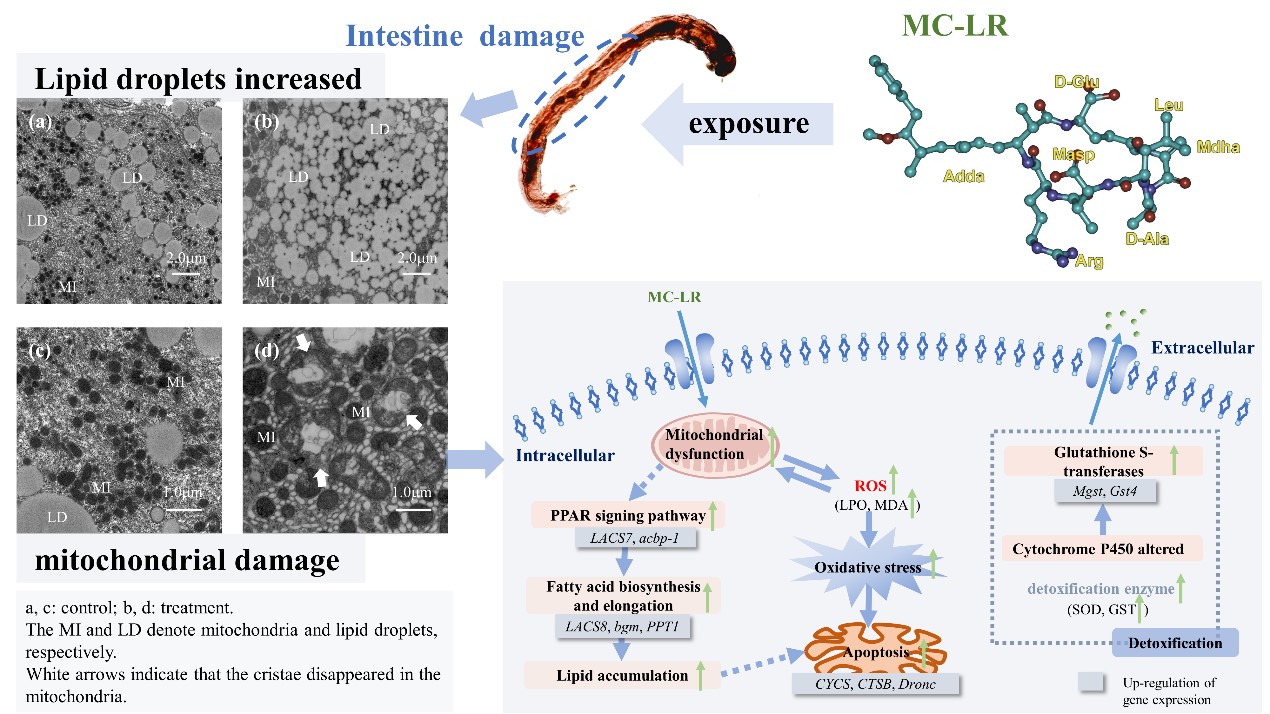Highlights
Chronic Exposure to Microcystin-LR Affects Life-history Traits, Intestinal Microbiota and Transcriptomic Responses in Chironomus pallidivittatus

The potential mitochondrial toxicity mechanisms in Chironomus pallidivittatus under MC-LR stress. (Credit: IHB)
When a large number of Microcystis fall into the sediment-water interface, its metabolites (MCs) will adversely affect the development of benthic animals. The effects of microcystin-LR (MC-LR) in chironomid larvae were usually neglected in the ecological risk assessment of cyanobacterial toxins in benthic invertebrates.
Recently, a research group led by Prof. WU Xingqiang from the Institute of Hydrobiology (IHB) of the Chinese Academy of Sciences provides the first evidence that MC-LR exposure inhibited larvae wet weight, increased emergence time of midges, damaged mitochondria, promoted oxidative stress, and dysregulated lipid metabolism of chironomid larvae. The study was published in the Science of The Total Environment.
The researchers first studied the effects of MC-LR on the development and life-history traits in C. pallidivittatus. They found that exposing larvae to MC-LR inhibited body length by 35.61% and wet weight by 21.92%, while increasing the emergence time of midges.
The researchers further studied the biomarkers of fatty acid composition, oxidation, and antioxidant responses. Results showed that MC-LR damaged mitochondria, promoted oxidative stress, and dysregulated lipid metabolism of chironomid larvae, respectively.
By analyzing the effects of MC-LR on intestinal microbiota in C. pallidivittatus, the researchers discovered that exposure to MC-LR altered the diversity and abundance of the intestinal microbiota, favoring pathogenic and MC degradation bacteria.
In addition, the transcriptomic analysis of MC-LR shows that it caused lipid accumulation by activating the peroxisome proliferator-activated receptor signaling in the Chironomus.
This study contributed to a comprehensive understanding and accurate assessment of the effects of the environmentally relevant concentration of MC-LR on the benthic invertebrates Chironomus at the sediment-water interfaces.
(Editor: MA Yun)